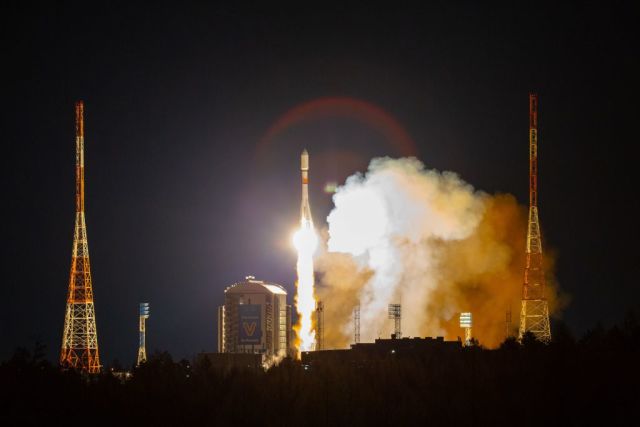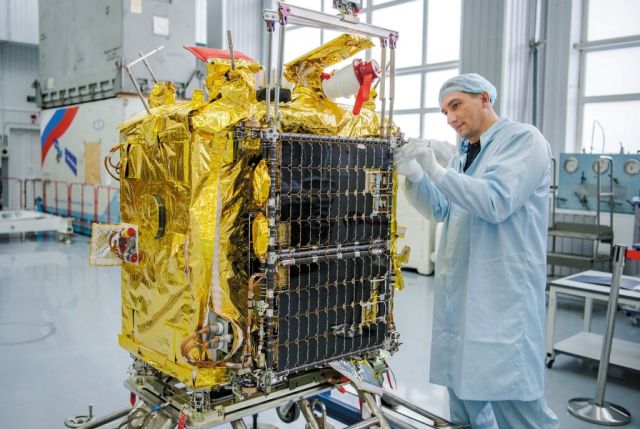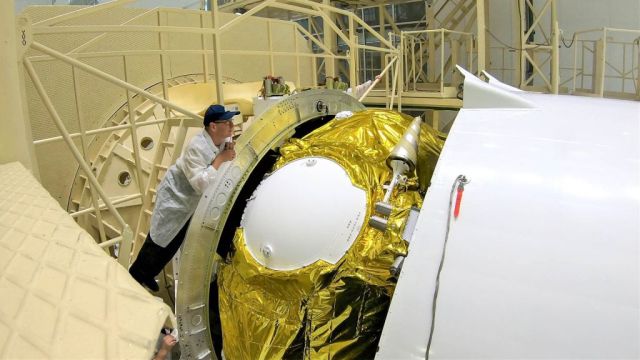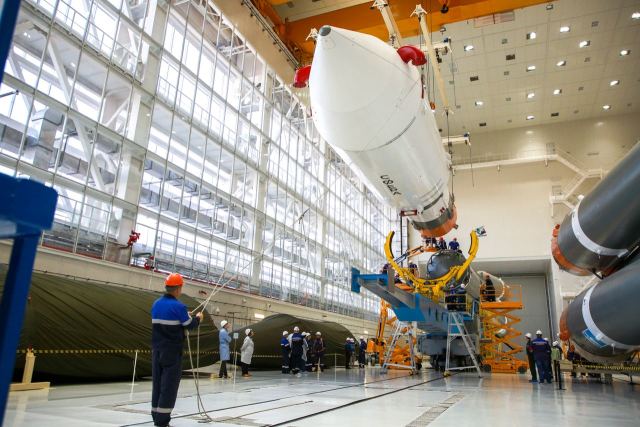Russia has sent the first Internet satellite "Skif-D" into orbit as part of the federal project "Sphere". This event can be considered an important achievement in the practical use of outer space. Many still believe that space programs are far from the needs of the layman, but one of the main goals of the "Sphere" is just to raise the quality of life of ordinary Internet users and cellular subscribers. This is especially true for residents of remote and hard-to-reach areas of our country. "Sphere" will give them the opportunity to get broadband Internet, uninterrupted cellular communication, and in the future – communication with Internet of Things (IoT) devices. The project will help to create a unified digital space of the country and overcome the digital inequality of the regions.We talk about how the Sphere project is developing and what contribution Rostec enterprises make to its implementation.
Put into orbit and amplify the signal
"Skif-D" flew into orbit in the company of three communication satellites "Gonets-M", which have been successfully working in space for many years. The launch of the vehicles took place from the Vostochny cosmodrome on October 22, 2022 by a Soyuz-2.1b carrier rocket with a Fregat upper stage and RD-107A/108A engines manufactured by the Samara enterprise ODK-Kuznetsov.
Modifications of these engines are equipped with the I and II stages of all R-7 launch vehicles, including the Soyuz. Since 1958, RD-107A/108A have been mass-produced by UEC-Kuznetsov with the design support of the developer NPO Energomash. The statistical reliability of these engines exceeds 99.9%.
So this time the engines traditionally worked in normal mode, there were no complaints about them. But there was one difference from the previous launches – the first and second stages of the Soyuz-2 launch vehicle used environmentally friendly rocket fuel - naphthyl for the first time. Back in 2018-2019, NPO Energomash and UEC-Kuznetsov carried out a complex of development work and tests of serial engines on new fuel - the performance and main characteristics of RD–107A/RD-108A power plants were fully confirmed. The transition to new fuel standards was carried out in accordance with the state strategy in the field of space exploration. Last year, the launch complex "1C" of the Vostochny cosmodrome was transferred to naphthyl.

Photo: KC Vostochny / Roscosmos So, we can say that the launch of the Skif-D satellite is also an important milestone in ensuring the highest level of environmental friendliness in the implementation of space programs. Naphthyl is a practically non–toxic hydrocarbon fuel. It belongs to low–hazard substances - the 4th hazard class on a 4-point scale.
In addition to ensuring the launch of the launch vehicle, Rostec State Corporation also took part in the production of the "filling" of the "Skif". In particular, Rostec supplied an ultra-high–frequency device for an Internet communication satellite - a traveling wave lamp (LBW) of a new type.
LBV is the main element of a power amplifier, a device that allows you to increase the distance of delivery of a radio signal that a satellite retransmits from the Earth's surface. The A-2015 traveling wave lamp for Skif was created by the Almaz NPP, which is part of Roselectronics. LBV operates in the Ka-band, has a small weight (less than a kilogram) and a service life of up to 15 years.
What is a traveling wave lamp, how it is arranged and where it is used – read in our materialA-2015 is a continuation of the line of lightweight high–performance domestic on-board lamps from NPP Almaz.
These devices are fully compatible with other devices of the enterprise for space, for example, with elements of microwave paths - switches and transitions.
Almaz engineers have developed a total of 36 types of traveling wave lamps for operation in space. To date, the company has already produced and delivered more than 1,500 products – their total operating time in space has exceeded 36 million hours.
Pioneer of future groupings
The launched Skif-D is a demonstration device, it is still working, we can say, in test mode. Its mass does not exceed 143 kg, energy consumption is about 250 watts. The active life of the "Skif" is three years.
Now the pioneer is taking part in the development of technical solutions for high-speed Internet access and protection of the orbital frequency resource. The importance of this work cannot be overestimated. Skif-D is twice a pioneer: it is not only the first apparatus of the federal project "Sphere", but also the first Russian satellite in history to function in a circular orbit with an altitude of 8000 km with a polar inclination of 90 degrees. Such parameters will make it possible to serve the northern latitudes: the Far North, the Arctic, the Northern Sea Route, polar flights.
 |
| ISS Reshetneva. |
| Source: ISS Reshetneva / Roscosmos |
In addition, this orbit will save satellites – a relatively small number of them will be able to serve the whole country. Another argument in its favor was the good ratio between the altitude at which the devices are located, the time of visibility of satellites for the subscriber and the total number of "Scythians" that will be needed to provide communication throughout Russia.
The operation of Skif-D in test mode will allow us to study the stability of the satellite's orbit in practice. In addition, new Russian-made service systems and payloads will be tested, including receiving and transmitting channels of the Ka frequency band. Thus, it is planned to work out technologies for providing broadband Internet to the regions of the Far North and the Arctic. In addition, the demonstration satellite must experience the effects of cosmic radiation and "report" on the effects of radiation on its systems.
The results of the work of the pioneer device will allow us to find the most effective solutions for launching a full-fledged satellite constellation "Skif". Thanks to it, satellite Internet will be available in all remote areas of the country. As for cellular communications, currently 70% of the country's territory is not covered by it. The fact is that the zones of taiga, tundra and permafrost interfere with the laying of fiber-optic networks. That's where the satellites will come to the rescue, provide communications for both stationary and mobile objects.
 |
| ISS Reshetneva. |
| Source: ISS Reshetneva / Roscosmos |
But that's not all. The launched Skif-D should also work out the most effective solutions for other groupings of the Sphere. In total, at the first stage, for which state funding has been allocated, it is planned to launch 162 devices. Five satellite communication groups will be created: in addition to Skif, Yamal, Express-RV, Express and Marathon will also be created. The first satellite of the Marathon group to provide the Internet of Things will go soon. And the launch of the first satellite of the Express-RV highly elliptical communication system is scheduled for the end of 2025.
In addition, it is planned to create five satellite groups of remote sensing of the Earth within the framework of the Sphere: "Berkut-X", "Berkut-O", "Berkut-VD", "Berkut-S" and "Review". Such observation in various wavelength ranges helps to solve problems in the economy, agriculture, fight natural disasters, forest fires, earthquakes, and control the radiation background.




